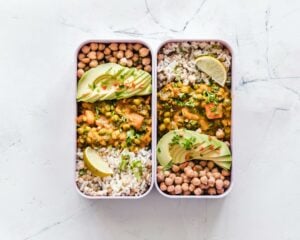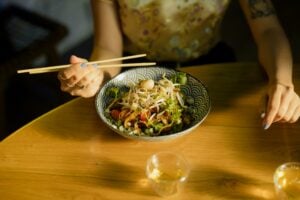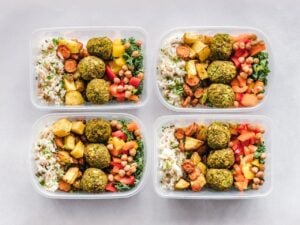Gluten-Free Grains Guide: Nutrition and Ways to Eat
Gluten-free grains are rising in popularity as more people are seeking healthier alternatives. If you have Celiac Disease or suffer from gluten intolerance, finding gluten-free foods can be a challenge. These top five gluten-free grains make a great addition to any healthy diet!
What Are Gluten-Free Grains?
Gluten is a name for a group of proteins found in wheat, rye, and barley. These grains are commonly used in popular foods such as bread, pasta, snacks, and even beer. While most people can digest gluten without a problem, for some people it can cause health issues.
While many popular grains do contain gluten, some grains do not. These gluten-free grains include quinoa, rice, corn, and more! Take the stress out of gluten-free shopping with one of the top three gluten-free meal delivery services.
Gluten-Free Grains List
These gluten-free grains are a great alternative for anyone looking to cut back on gluten.
1. Quinoa
Although quinoa is actually a grass seed, its grain-like taste qualities make it a great gluten-free grain alternative.
Nutritional Benefit
Quinoa is one of the healthiest grain alternatives you can eat! It is full of protein, fiber, Vitamin E, iron, and more important nutrients. It is one of a small number of plants considered a complete protein.
Ways to Eat Quinoa
Cook quinoa like rice as a fluffy base for some vegetables, or as an ingredient in gluten-free crusts, pancakes, and even bread. When you cook quinoa, be sure to rinse it well, first, to remove the bitter coating on the seeds. To cook quinoa, bring it to a boil with water. Then, reduce to a simmer for 15 minutes. Fluff and enjoy!
2. Rice
Rice is one of the most popular foods in the world, and it is also a gluten-free grain! Rice is the staple food of some of the largest and oldest cultures in the world. Many Asian cuisines rely heavily on rice. Every type of rice is gluten-free (yes, even sticky rice!).
Nutritional Benefit
The nutritional benefit of rice will depend on which variety of rice you choose to go with. Brown rice is healthier than white because it has been less processed, leaving the outer layer intact. Brown rice contains more fiber and micronutrients like vitamin B1, vitamin B6, magnesium, and selenium. Black rice and wild rice are even healthier. Sticky rice is the least healthy, so it is best enjoyed in moderation.
Ways to Eat
There are thousands of varieties of rice, so the ways to eat it are only limited by your imagination. You can roll some sticky rice up into sushi, add Spanish rice to your corn-flour burrito, or simmer a delicious curry to pour over a steaming bowl of Basmati rice. To make your life easy, cook a big pot of rice over the weekend and then store it for leftovers throughout the week.
3. Corn
Corn is another other of the most popular gluten-free gains enjoyed around the globe. South and Native American diets consist heavily of corn. There are many types and varieties of corn, and it can be eaten whole or processed. The most common type of corn as a gluten-free gain alternative is flour corn, which is easily ground into cornmeal.
Nutritional Benefit
Cornmeal is a great source of fiber and carbohydrates. One cup of cornmeal also contains about a quarter of the daily recommended iron for women (over half for men!).
Ways to Eat
You can use cornmeal as a replacement for wheat flour in baked goods. If you prefer a smoother texture be sure to get finely-ground corn flour. Use cornmeal for gluten-free tortillas, make it into polentas, or bake it in bread.
4. Oats
Oats aren’t only for breakfast! This gluten-free grain makes a great alternative to both sweet and savory meals.
Nutritional Benefit
Oats contain high levels of beta-glucan, an important fiber that helps you feel full. Researchers from the American Society for Nutrition have found that beta-glucan can help lower bad cholesterol levels and regulate blood sugar. Oats also contain protein, magnesium, zinc, and other necessary nutrients.
Ways to Eat
A bowl of hot oatmeal is the most classic way to enjoy oats. To change it up, you can also add oats to baked goods like bread and muffins, make granola bars, or use oats to top some yogurt and fruit. Boil oats with water for about 10 minutes, or slightly longer for steel-cut oats.
5. Buckwheat
Don’t let the name fool you! Buckwheat is not related to wheat at all and is completely gluten-free. Buckwheat has been enjoyed in Asian cuisine for thousands of years.
Nutritional Benefit
Buckwheat is high in rutin, a flavonoid that helps to strengthen blood vessels and reduce inflammation. Like other gluten-free grains, buckwheat may help manage insulin and cholesterol levels.
Ways to Eat
One of the most popular ways to eat buckwheat is soba noodles, a popular Japanese food. Traditionally, soba noodles contain some amount of wheat flour. Be sure to look for noodles that are 100% buckwheat for a truly gluten-free noodle alternative. If cooking your own buckwheat, try toasting it first for a nutty taste.
Use Gluten-Free Grains to Make Delicious Meals
Gobble takes the hassle out of eating gluten-free with fast, easy, and delicious meals for any diet. Each week, choose from a rotating menu of meals, including gluten-free options. Save time and energy with a fast 15-minute prep. Each ingredient and potential allergen is always listed, so you can order gluten-free meals with confidence. For those looking for healthier options, try the Lean & Clean plan. Let Gobble make life easier by bringing gluten-free meals right to your door!



